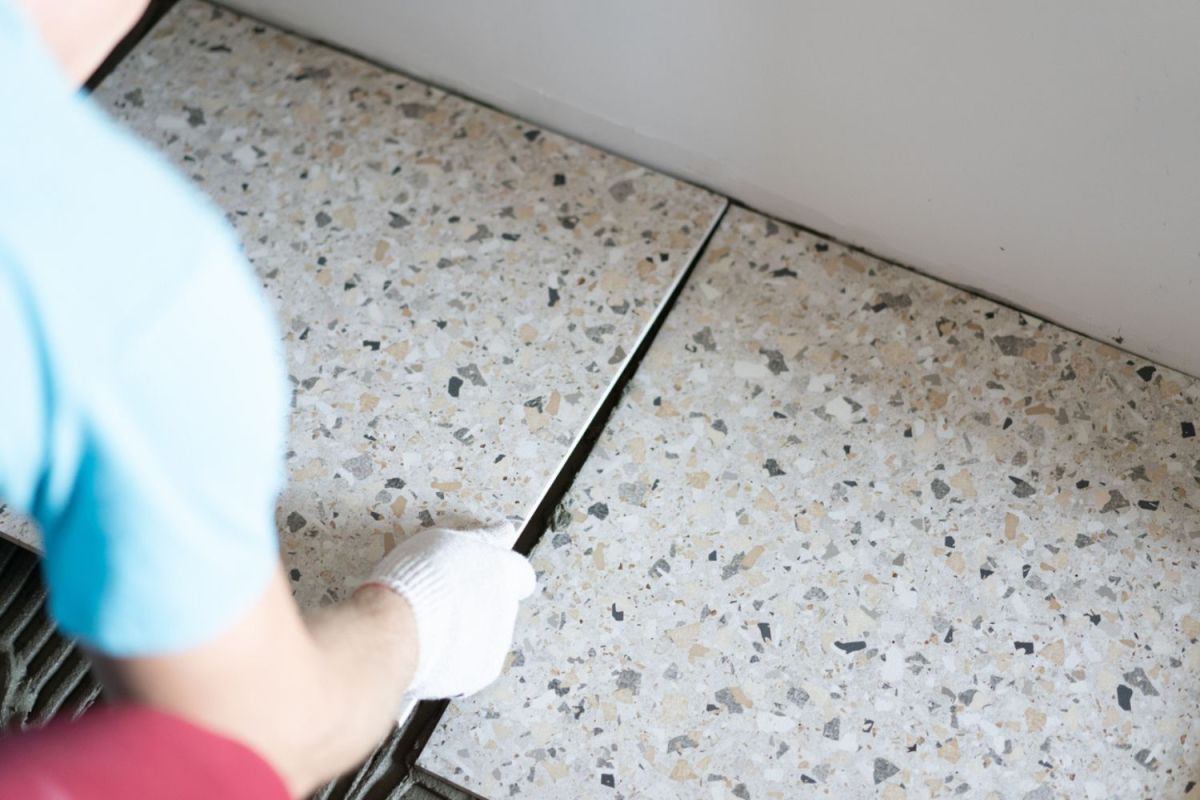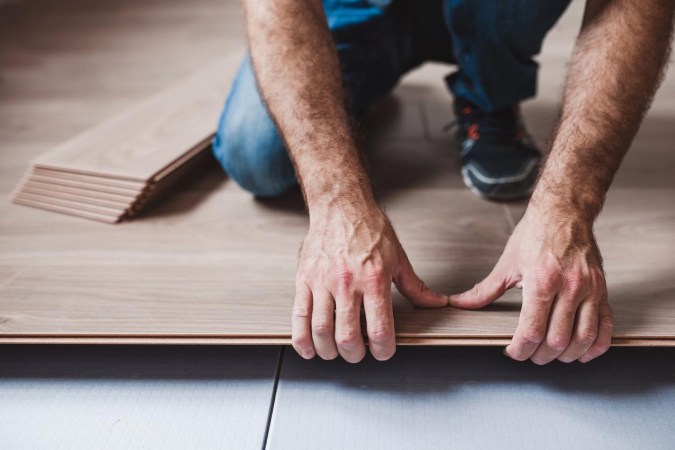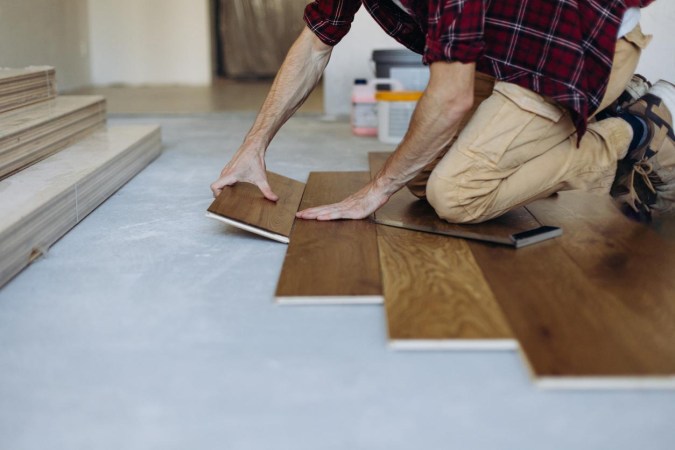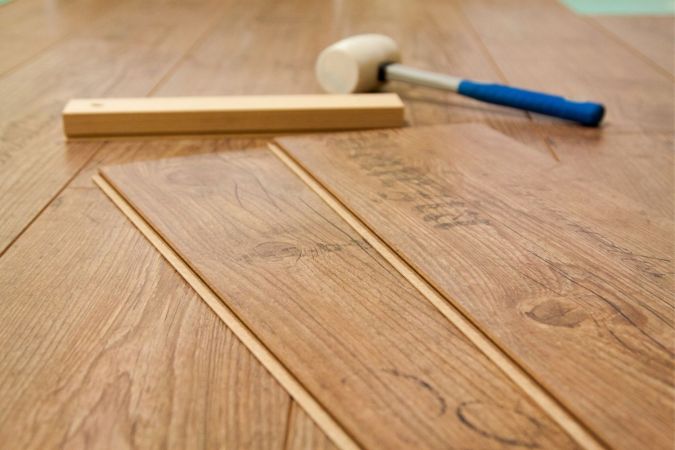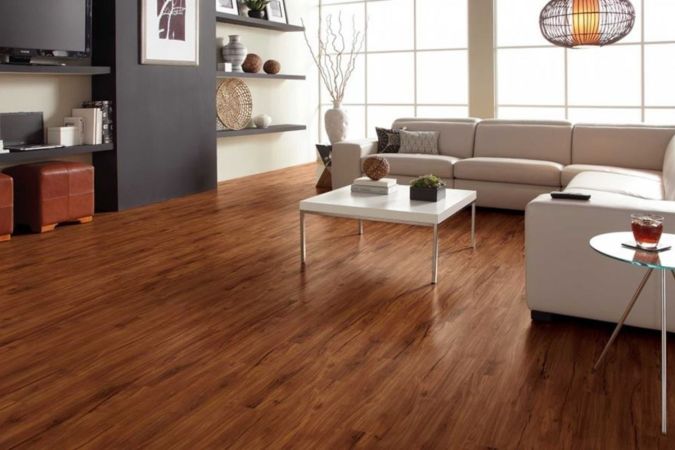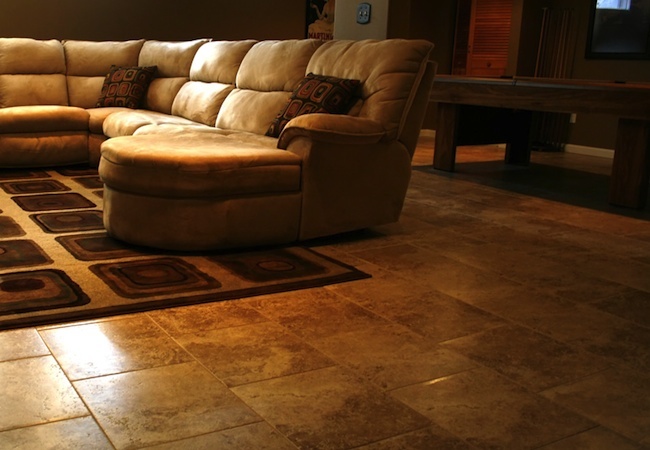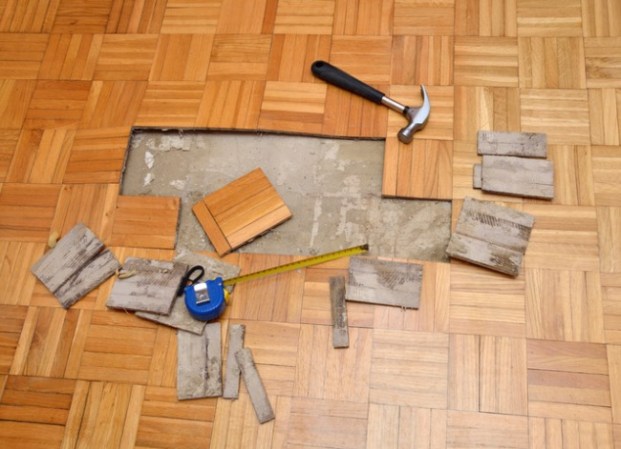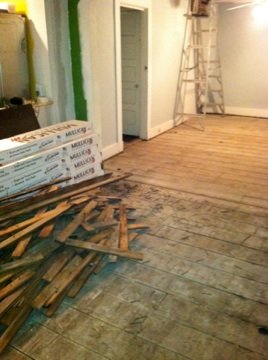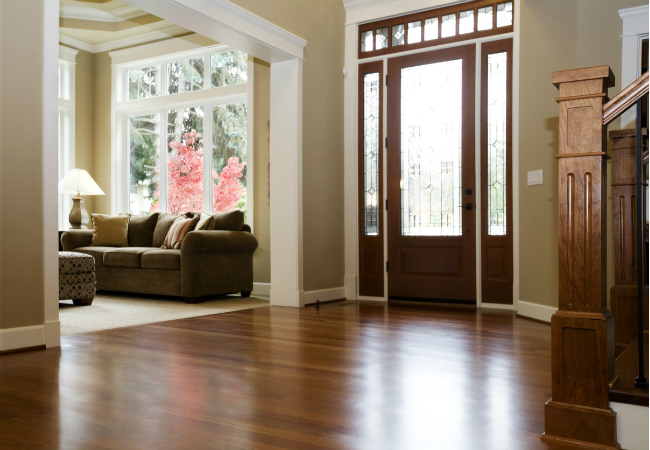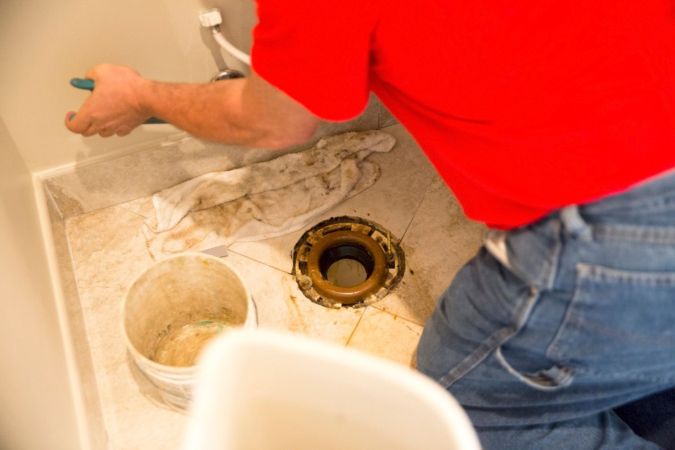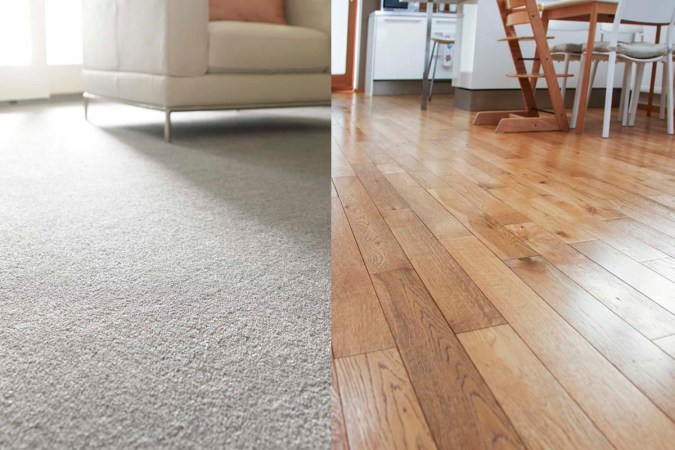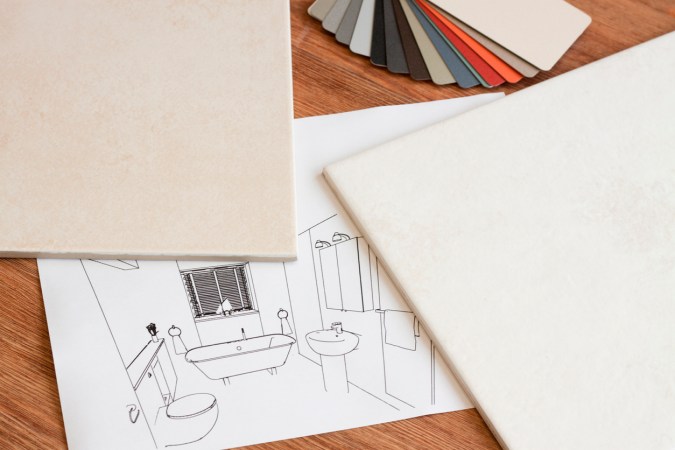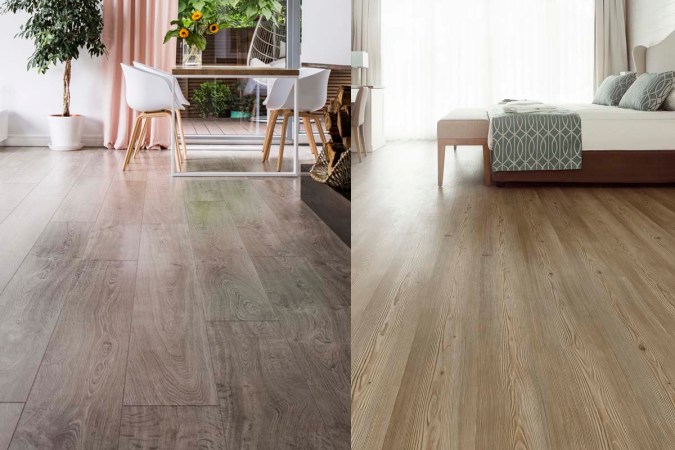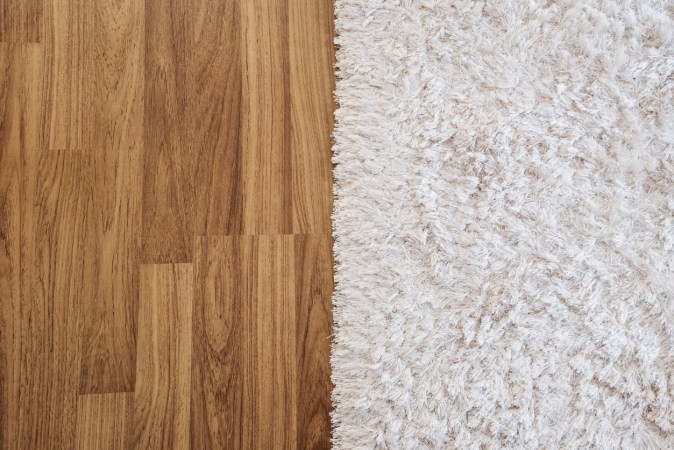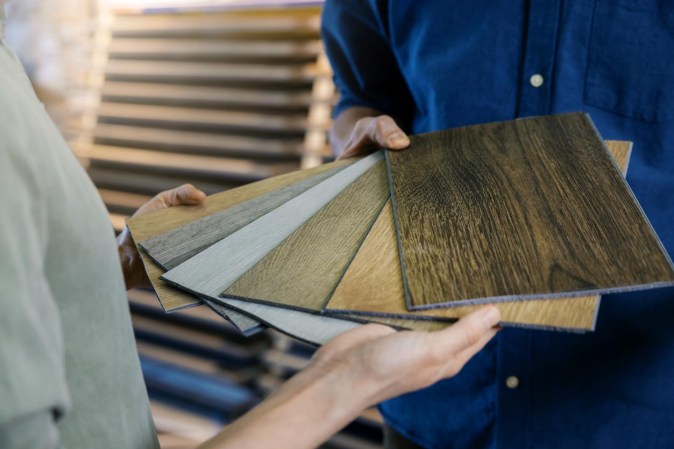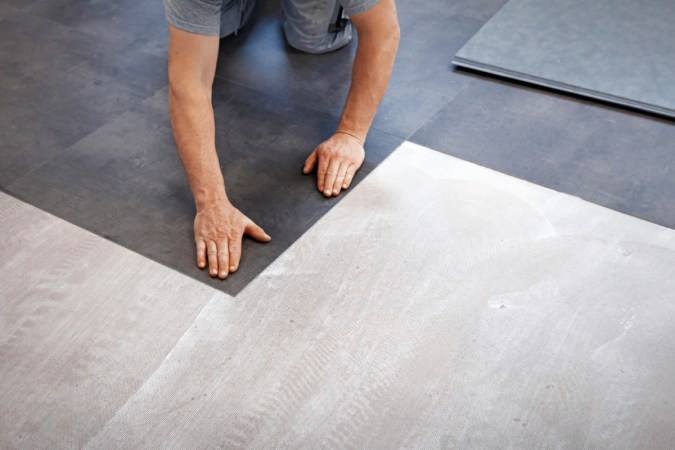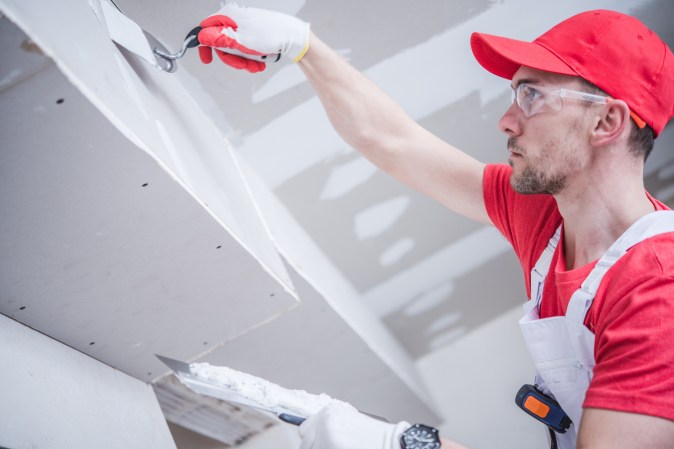We may earn revenue from the products available on this page and participate in affiliate programs. Learn More ›
Highlights
- Terrazzo flooring costs typically average $4,400 but could range from $1,800 to $7,000.
- The floor size, type and material of terrazzo, custom designs, and labor rates are all important factors to consider when homeowners are calculating the budget for terrazzo floor installation.
- Terrazzo floors have numerous benefits that homeowners prefer over other types of floors, including durability, low maintenance, eco-friendliness, and resistance to stains and other damage.
- Installing terrazzo floors is not as simple as installing ceramic tiles or hardwood floors. The skill and expertise to pour, lay, and design a terrazzo floor are worth the upfront investment of hiring a professional installer.
Terrazzo flooring is a timeless and elegant choice for both homes and commercial spaces. Its unique blend of marble, glass, and other aggregates set in a matrix of concrete or epoxy makes it a durable, attractive, and low-maintenance flooring option throughout a home.
So how much does terrazzo flooring cost? The cost to install terrazzo flooring can vary significantly depending on several factors. According to Angi and HomeAdvisor, a homeowner can expect to pay anywhere from $9 to $35 per square foot for modern terrazzo flooring. Many homeowners pay between $1,800 and $7,000, with the national average at $4,400.
This price range is influenced by various elements, including the type of aggregates used, the complexity of the design, and local labor rates. Terrazzo floor polishing and maintenance can also affect long-term costs, so it’s essential for homeowners to consider these expenses when planning a flooring budget.
The labor for terrazzo flooring installation cost will fluctuate depending on the installation method, which generally ranges from $5 to $20 per square foot. The intricacy of the installation process—and the differences in cost between a terrazzo kitchen floor and a terrazzo bathroom floor—can impact labor expenses. If a homeowner opts for terrazzo vinyl flooring, the cost may be on the lower end of the spectrum, but this type might require more frequent replacement than a traditional terrazzo floor.
Other related costs, such as for tools and supplies, also come into play. High-quality sealers and adhesives are essential for terrazzo flooring installation, ensuring the material’s longevity and durability. These items can add to the overall cost, but they are crucial for maintaining the beauty of the terrazzo floor tile. Investing in this timeless and resilient flooring option can enhance the overall design aesthetic and value of a home.
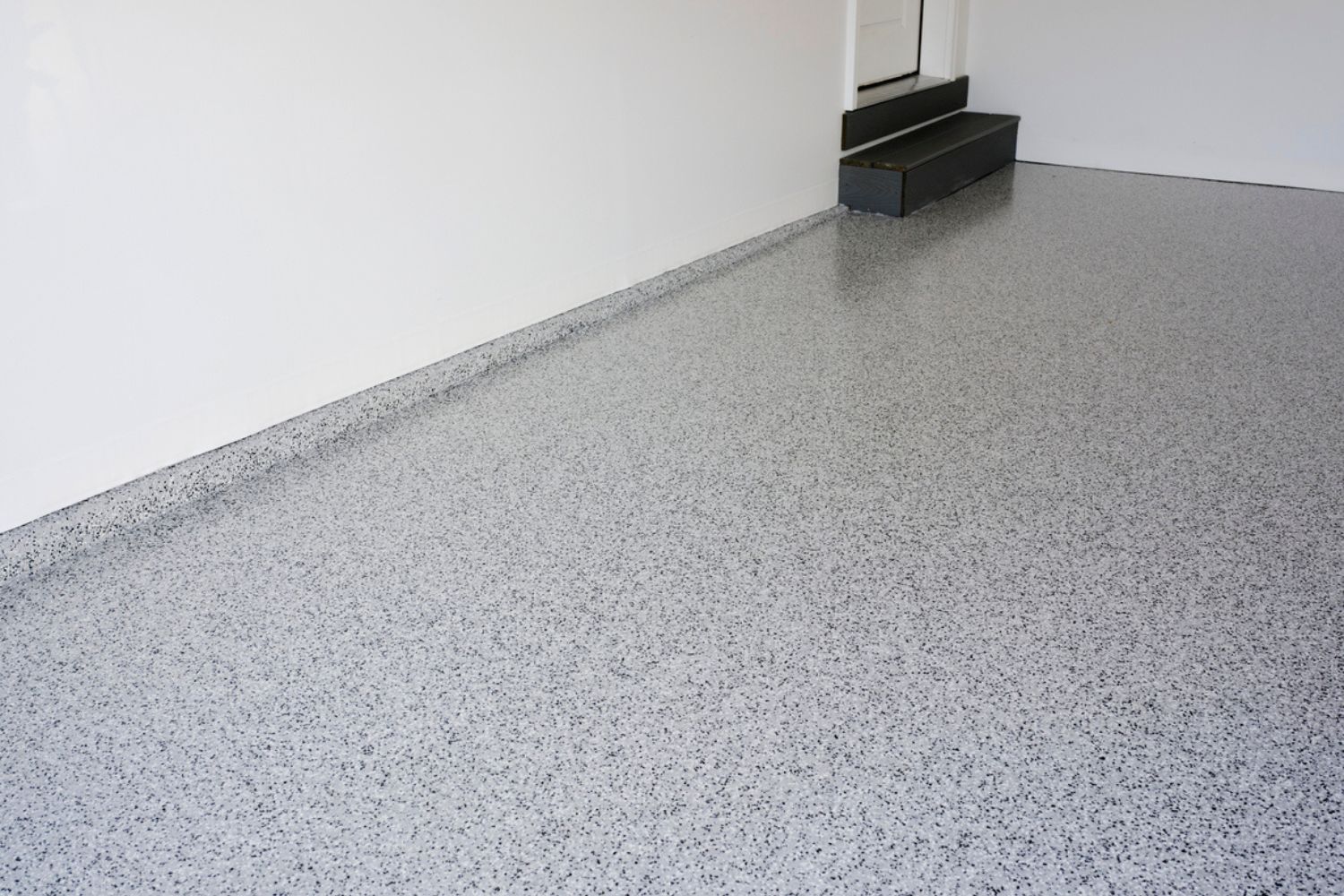
Factors in Calculating Terrazzo Flooring Cost
When homeowners are estimating the cost of terrazzo flooring, several key factors come into play, influencing the overall expense of the project. It’s important for homeowners to understand that the national average of $4,400 can differ significantly from local averages.
Aspects that can affect the overall cost of terrazzo flooring include floor size; terrazzo type and brand; installation method; terrazzo style, pattern, and texture; and local labor pricing. When it comes to popular flooring options, terrazzo flooring cost is more expensive than marble flooring cost and polished concrete flooring cost.
Floor Size
The size of the floor area is a significant factor in the overall pricing of terrazzo flooring installation. As a rule of thumb, the larger the floor, the more homeowners can expect to pay. For those researching bathroom flooring ideas, a terrazzo floor in a smaller bathroom will be more budget-friendly than for a larger room, since additional materials, labor, tools, and equipment are required for larger spaces.
Terrazzo flooring is typically sold by the square foot. As the floor size increases, more materials are needed, which can substantially drive up the cost. This is why larger spaces, such as commercial buildings and expansive residential areas, tend to have higher material expenses.
On the flip side, larger floor areas might benefit from economies of scale—or efficient production. In some cases, when installing terrazzo flooring over a substantial area, contractors can be more efficient in their work, potentially reducing the per-square-foot labor cost.
Terrazzo Type and Brand
The type and brand of terrazzo play a crucial role when homeowners are determining terrazzo flooring cost. There are two main types of terrazzo flooring: poured and tile. Terrazzo tile installation is typically more budget-friendly than poured terrazzo floor installation, since tile takes less time and isn’t as laborious. A less-traditional and less-expensive option is terrazzo vinyl flooring. This mimics the appearance of traditional terrazzo using vinyl materials instead of natural stone, concrete, or epoxy.
The brand of terrazzo that a homeowner chooses will also impact the cost. Well-known and durable brands such as Fritztile and Floorazzo often command higher prices due to their quality and durability. While these brands may come at a premium, they can provide peace of mind for homeowners regarding quality and longevity. Lesser-known or generic terrazzo brands may offer more budget-friendly options. Such brands might be suitable for projects with tighter budgets, but it’s essential that homeowners carefully assess the quality and durability of the products.
The availability of different terrazzo types and brands can also vary by region. In some areas, specific brands may be more readily available, affecting the pricing. Transportation costs can also play a role in regions where certain materials need to be imported.
It’s recommended that homeowners consult with a professional terrazzo flooring installer or contractor to discuss the best type and brand of terrazzo flooring for their home. These professionals can provide guidance on selecting the most suitable option based on the homeowner’s design preferences as well as durability requirements and cost considerations. This can help ensure that a homeowner gets the best value for their investment.
Installation Method
The installation method used for terrazzo flooring has a substantial impact on the overall cost of the project. Additionally, the complexity and intricacy of the installation process can significantly influence material and labor costs.
- Traditional pour-in-place installation. This is the standard, labor-intensive method. In this process, a skilled installer creates the terrazzo mixture on-site by mixing marble or glass aggregates with cement or epoxy resin. The mix is poured and spread before being polished to a smooth finish. The costs associated with this method are higher due to the craftsmanship required and the labor-intensive nature of the process.
- Terrazzo tile installation. Terrazzo tiles are premade and can be installed much like standard tiles. While the tiles themselves may be more expensive than traditional terrazzo materials, the installation process is often less labor intensive. This can result in cost savings in terms of labor, especially for larger areas.
- Sand-cushion terrazzo installation. The sand-cushion terrazzo flooring installation method is also known as the “bonded terrazzo” installation method. In this approach, a sand-cement mortar bed, commonly referred to as a “cushion” or “sand cushion,” is used as a base beneath the terrazzo. The two layers bond together to create a durable and aesthetically pleasing flooring surface. This is a widely used approach for terrazzo installation.
- Monolithic terrazzo flooring installation. The terrazzo mixture, composed of aggregates and a binder such as epoxy or cement, is poured directly over a prepared concrete slab or subfloor during a monolithic installation. Unlike with the bonded terrazzo method, there is no intermediate layer or bond coat. The terrazzo material adheres directly to the substrate, resulting in a seamless and durable flooring surface. This method is often chosen for its ease of installation and is commonly used in modern terrazzo flooring applications.
- Thin-set installation. Epoxy resin, blended with aggregates, creates a single, thin layer measuring between ¼ inch and ⅜ inch. This method minimizes the risk of cracking and is specifically designed for interior installations.
Homeowners will want to consider each installation method and factors such as the design complexity, budget constraints, and the desired finish. It’s important to work closely with a professional terrazzo installer or contractor who can recommend the most cost-effective and suitable installation method based on the specific project requirements and homeowner’s design style.
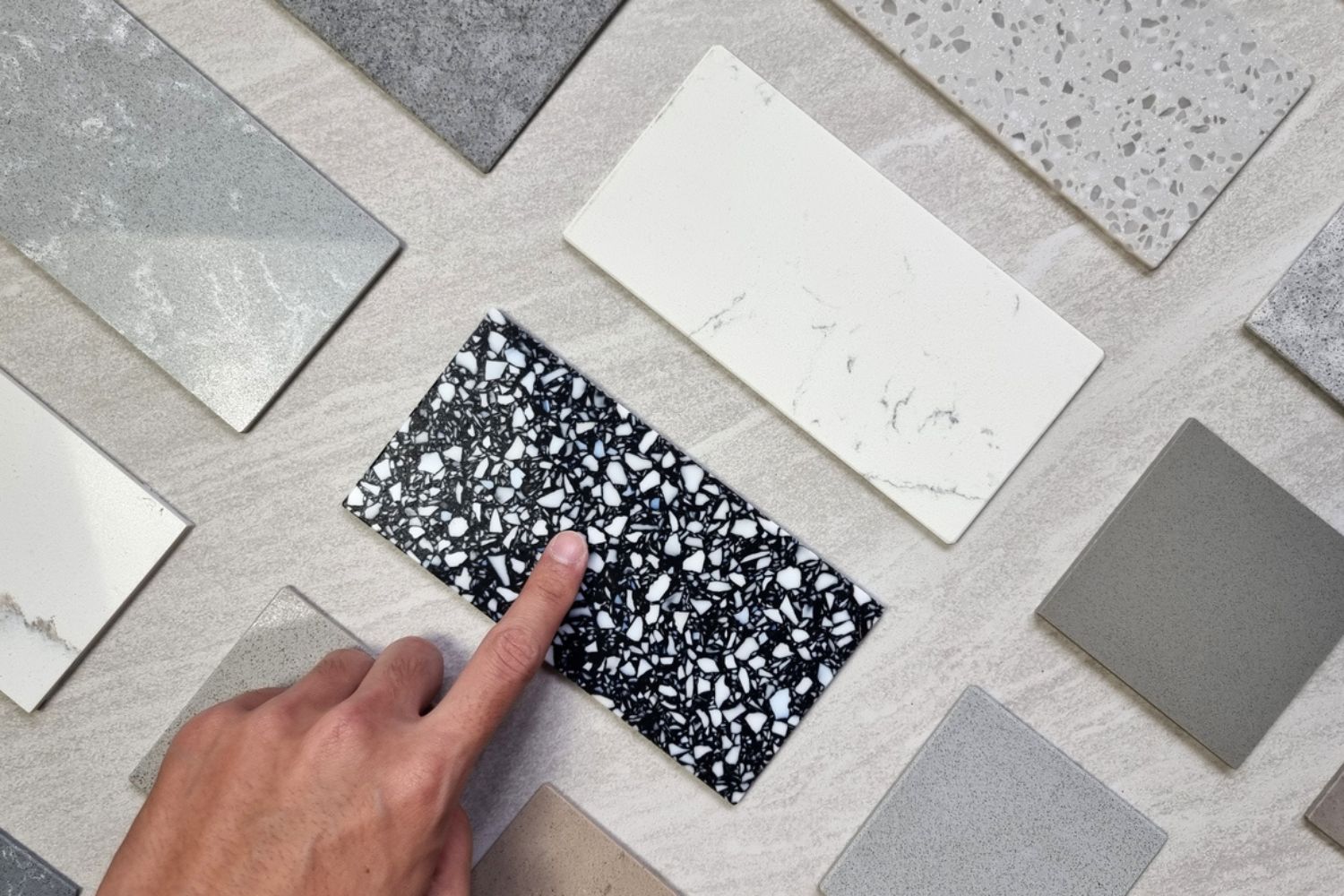
Terrazzo Style, Pattern, and Texture
The style or design of terrazzo flooring is a key factor that can affect the cost of installation. More intricate and custom designs tend to increase the final price, since they may require additional labor and materials to achieve specific patterns, borders, or artistic inlays.
The choice of aggregates used in the terrazzo design can also affect the cost. Rare aggregates, such as precious stones and unique glass chips, can be more expensive than standard materials. The price of aggregates is determined by their availability and rarity, which in turn influence the overall cost. Custom color combinations and intricate patterns with numerous color transitions require more detailed work during installation, contributing to increased labor costs.
Simple, uniform patterns are generally less expensive to install than complex, intricate ones. A straightforward pattern that requires minimal cutting and arranging of terrazzo pieces will result in lower labor costs. Custom-designed patterns, decorative borders, incorporated logos, and intricate artistic inlays often involve more detailed work and will increase costs.
A smooth, polished finish is a common preference for terrazzo flooring. Achieving a smooth texture typically involves multiple grinding and polishing steps. Exposed aggregate terrazzo features visible aggregate particles within the matrix. This textured look can be achieved by grinding down the surface to expose the aggregates. Homeowners interested in extra traction may prefer a more textured surface.
Labor
Local labor prices will influence the cost of terrazzo flooring installation. Labor costs can vary widely from one region to another, and understanding how local labor prices affect the overall cost is important for homeowners.
Labor rates for skilled trades like terrazzo installation can vary considerably. Urban areas tend to have higher labor rates due to increased living costs, while rural areas may have lower rates. Local labor prices can also be influenced by the supply and demand for terrazzo installers. In areas with high demand for skilled labor, labor costs may rise.
Other elements that can impact labor pricing are local economic conditions, the experience and skill level of the installer, and the complexity of the project. On average, homeowners can expect to pay between $5 and $20 per square foot for poured terrazzo floors and about $10 per square foot for tiled terrazzo floors.
The size of the floor area also affects the labor costs. Larger spaces require more time and effort for installation. The complexity of the installation process, including creating intricate designs or incorporating decorative elements, can further increase labor costs.
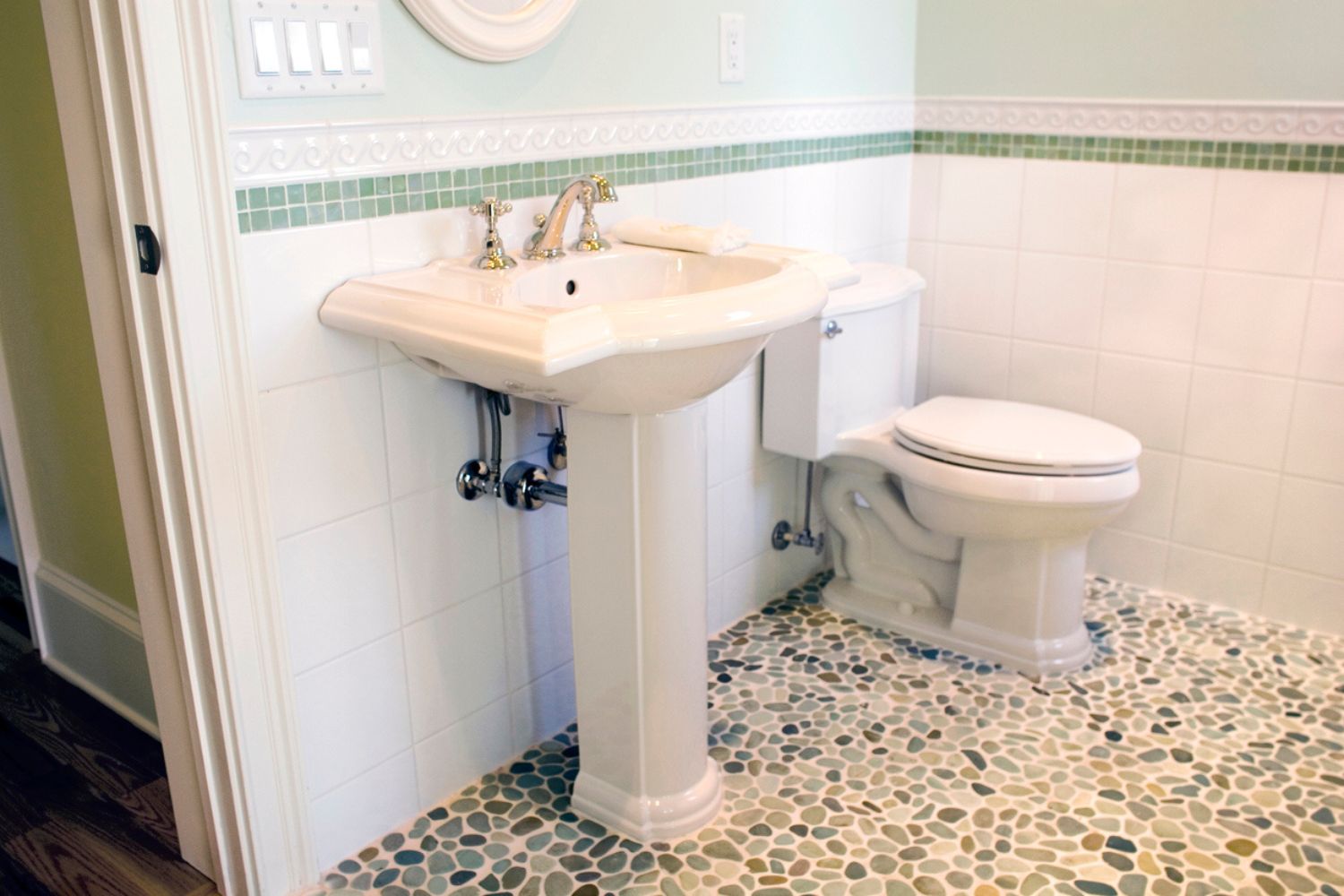
Additional Costs and Considerations
In addition to the cost of materials and labor, there are a few other factors and considerations that can impact terrazzo flooring cost. These can include the choice between epoxy and cement, furniture removal, removal of the existing floor, and subfloor repairs. Homeowners will want to factor these additional costs into their budget to ensure a comprehensive estimate for the project.
Epoxy vs. Cement
The choice between epoxy and cement-based terrazzo is important to consider when homeowners are planning the budget. Epoxy terrazzo is typically more budget-friendly, and it offers a smooth and seamless finish. Cement terrazzo is more expensive but is popular for exterior applications.
Furniture Removal
Before the flooring installation can begin, any existing furniture must be temporarily removed from the space. Hiring the contractor to move the furniture can add between $25 and $35 per hour to the overall cost. Some homeowners choose to handle this themselves to save on labor expenses.
Existing Floor Removal
If there is an existing floor that needs to be removed before the terrazzo is installed, this demolition can come with additional costs. The type of existing floor, its condition, and the labor required for removal will influence the final price. On average, homeowners can expect to pay between $1 and $2 per square foot for floor removal and $7 per square foot for tile removal.
Subfloor Repairs
The condition of the subfloor is critical for a successful terrazzo installation. If the subfloor requires repairs, such as leveling or addressing structural issues, these costs will need to be considered. Knowing who to hire to replace a subfloor is important information for any homeowner remodeling a floor. The extent of subfloor repairs can vary widely, and the cost to replace a subfloor will depend on the necessary work.
| Type of Subfloor Restoration | Average Cost |
| Subfloor reinforcement | $300 to $1,000 |
| Subfloor repair | $400 |
| Subfloor replacement | $3 to $10 per square foot |
Maintenance
Homeowners will want to plan for long-term maintenance costs when installing terrazzo floors. Larger terrazzo floors will require more sealing supplies than smaller floors, and it takes longer to reseal a larger floor, resulting in additional labor cost.
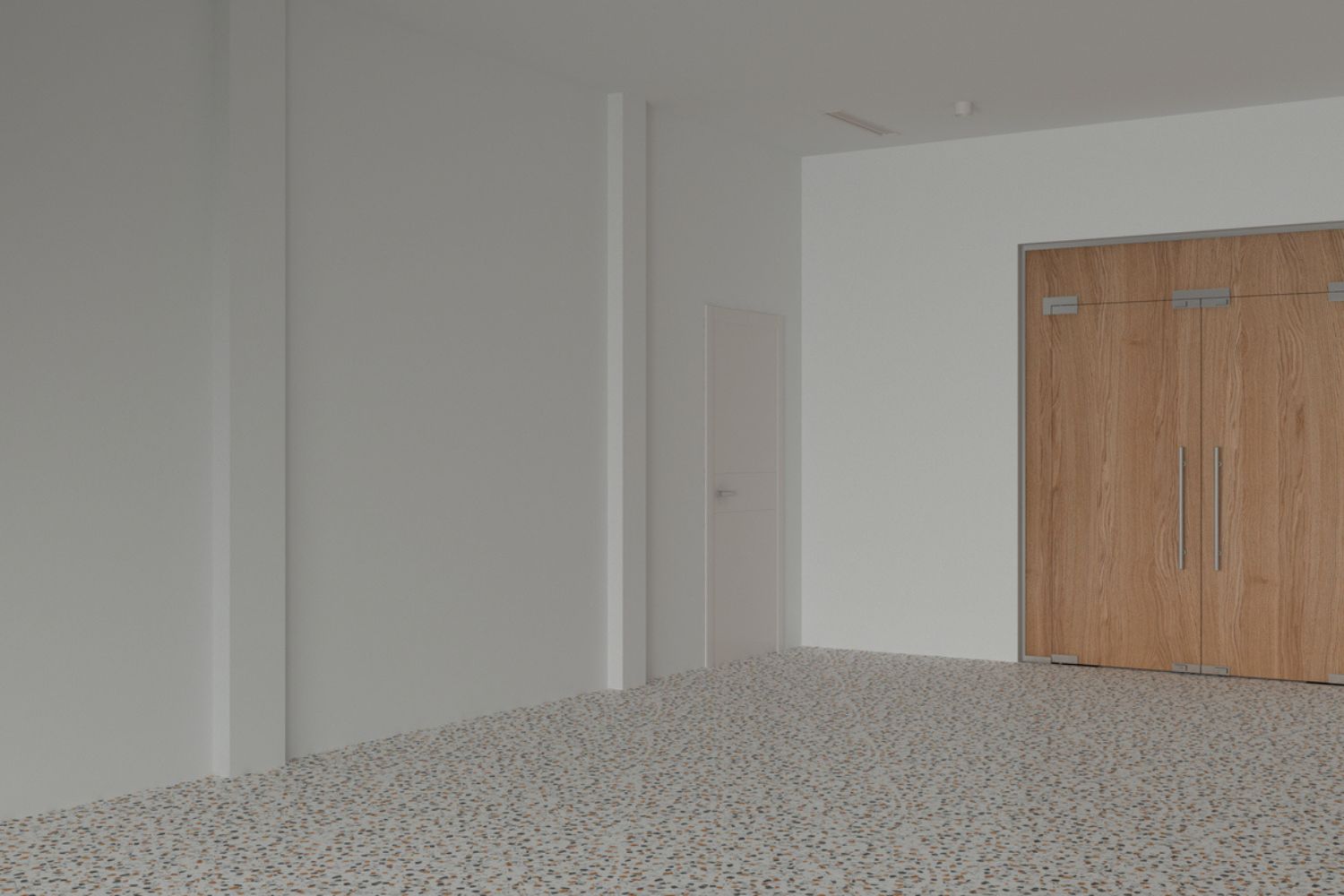
Types of Terrazzo Flooring
Terrazzo flooring offers a range of options to suit various preferences and budgets. There are two primary types of terrazzo flooring, and it’s valuable for homeowners to understand how they influence the overall cost.
| Type of Terrazzo Flooring | Average Cost Range (Materials and Labor) |
| Poured | $15 to $35 per square foot |
| Tiled | $9 to $22 per square foot |
Poured
Poured terrazzo, often referred to as “in situ” or “monolithic” terrazzo, is a traditional and timeless choice. It involves creating the terrazzo mixture on-site by combining aggregates (marble, glass, or other materials) with a cement or epoxy resin matrix. The mixture is then poured, spread, and polished to form a seamless and elegant surface. The cost of poured terrazzo can vary depending on certain factors.
- Aggregates. The type, quality, and rarity of aggregates incorporated will play a significant role in cost. High-end, exotic aggregates can increase material expenses.
- Design complexity. More intricate and custom designs with complex patterns or artistic inlays require additional labor, affecting installation costs.
- Labor costs. Skilled labor is essential for the precise installation and polishing of poured terrazzo. Labor costs can fluctuate depending on the region and the complexity of the project.
The national average cost for poured terrazzo flooring typically ranges from $5 to $15 per square foot for materials and an additional $10 to $20 per square foot for labor.
Tile
Tile terrazzo offers a more cost-effective and efficient alternative to traditional poured terrazzo. Terrazzo tiles, which are premade off-site, come in various colors and designs. These tiles are installed in a manner similar to the process for regular tiles with adhesive and grout. Tile terrazzo can be more budget-friendly based on several factors.
- Tile quality. The quality of terrazzo tiles can influence the material cost. Premium-quality tiles may come at a higher price.
- Labor costs. The installation process for terrazzo tiles is generally less labor-intensive than for poured terrazzo and can result in reduced labor expenses.
- Design options. Terrazzo tiles come in a wide range of designs, and the complexity of the design can affect the cost.
On average, the cost of terrazzo floor tile ranges from $4 to $12 per square foot, with another $5 to $10 per square foot for labor. This makes it a more cost-effective option for those seeking the timeless appeal of terrazzo without the higher costs associated with traditional poured terrazzo.
Benefits of Choosing Terrazzo Flooring
Terrazzo flooring is an exceptional choice for residential spaces, offering a multitude of benefits that make it a popular flooring option.
Durability and Longevity
One of the standout benefits of terrazzo flooring is its durability and longevity. Terrazzo is renowned for its robust and resilient ability to withstand heavy foot traffic and endure for decades—if not a lifetime. Its resistance to wear and tear, cracking, and chipping ensures that a terrazzo floor will maintain its original beauty and structural integrity over time, making it a valuable long-term investment. This durability minimizes the need for frequent replacements, saving homeowners money in the long run.
Low Maintenance Requirements
Terrazzo’s low maintenance requirements are another compelling advantage. Its nonporous surface makes it resistant to stains and easy to clean. Regular sweeping and occasional mopping are typically all that’s needed to keep it looking pristine. Unlike other flooring materials, terrazzo doesn’t require extensive and costly maintenance or frequent refinishing, further reducing the overall cost of ownership.
Wide Range of Designs
Terrazzo offers an extensive range of design possibilities, making it a versatile choice for diverse design options. The variety of colors, aggregates, and patterns available allows for customized designs that suit any interior or architectural style. Whether a homeowner prefers a traditional, timeless look or a modern and artistic design, terrazzo can be tailored to meet their unique vision, enhancing the aesthetic value of the space. Terrazzo can even be used as one of the best countertop materials for those who are fans of the look.
Eco-Friendliness
For environmentally conscious individuals, terrazzo flooring aligns well with sustainability goals. It is composed of natural or recycled materials, such as marble or glass chips, and is blended with a cement or epoxy binder. This eco-friendly composition reduces the carbon footprint of the flooring, making it a responsible choice for environmentally aware consumers.
Damage, Fire, and Stain Resistance
Terrazzo flooring is inherently resistant to various types of damage, including scratches, abrasion, and impact. This makes it an ideal choice for high-traffic areas. It also has excellent fire resistance, providing an added layer of safety in case of a fire emergency. Its nonporous surface is also naturally stain-resistant, allowing it to withstand spills and stains with ease.
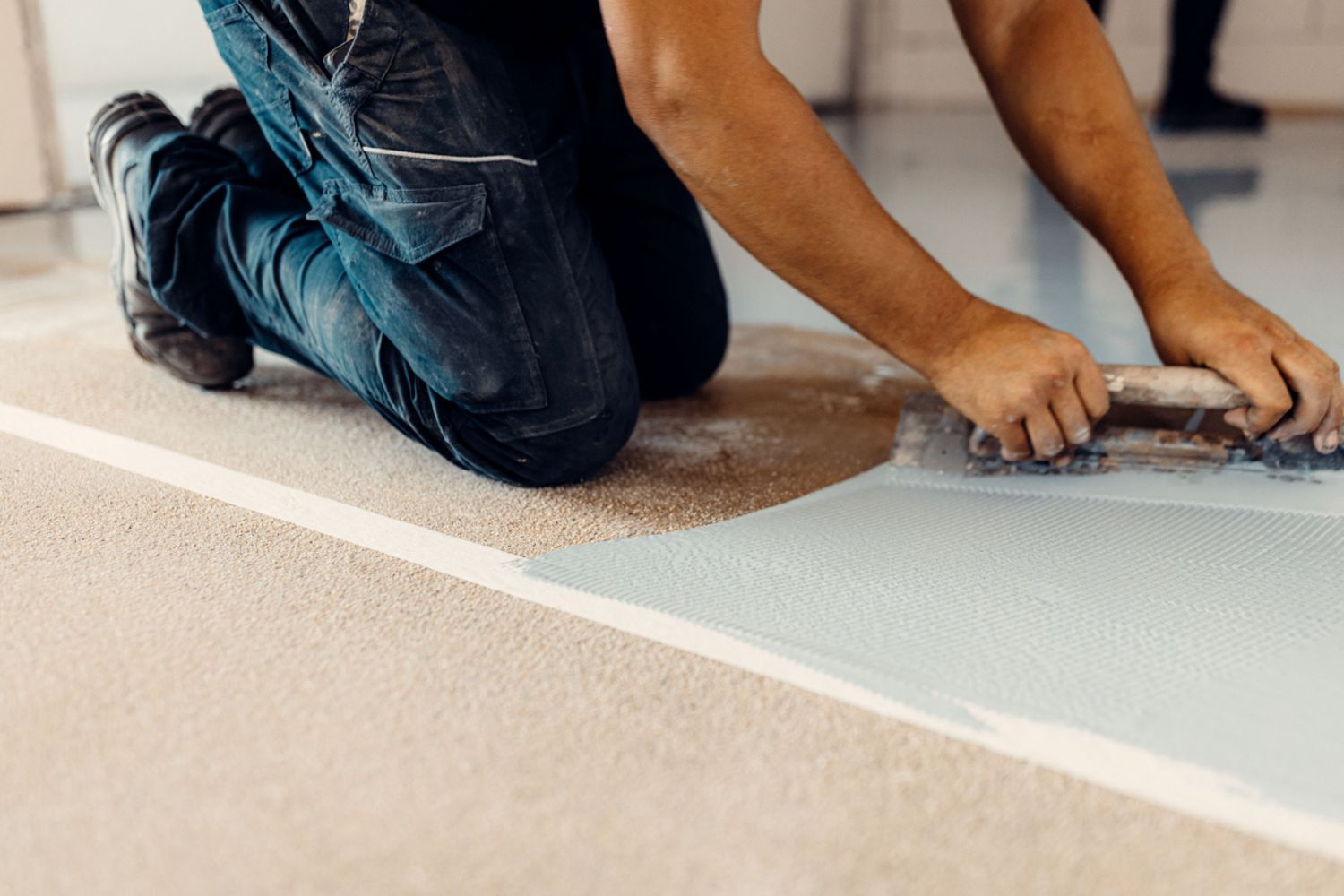
Terrazzo Flooring Installation: DIY vs. Hiring a Professional
When it comes to terrazzo flooring installation, there are two options: the DIY approach or hiring a professional installer. Each option has its own set of pros and cons, as well as potential cost considerations. The most obvious advantage of the DIY route is labor cost savings. Homeowners will not have to pay for professional installation, reducing the overall project cost.
However, it’s important for homeowners to remember that terrazzo installation is a highly specialized skill that demands expertise in mixing and pouring the terrazzo, creating a smooth finish, and polishing the surface. Without experience and equipment, achieving a professional look can be challenging. DIY terrazzo installation can be time-consuming and labor-intensive with a steep (and sometimes expensive) learning curve. If not executed correctly, DIY installations may result in quality and durability issues, and imperfections can surface over time, leading to costly repairs.
Professional installers have the experience, skills, and knowledge to help ensure a flawless installation. They can handle creating complex patterns and intricate designs with a high-quality finish. Professionals also work efficiently, completing the installation in a timely manner. This minimizes potential disruptions to homeowners’ daily life and reduces the installation timeline for both new and existing construction projects.
Reputable installers often offer warranties on their work, providing peace of mind that any issues will be addressed promptly. Hiring professionals does come at a price, including labor costs. The initial investment will be higher than for a DIY approach, but many homeowners agree that the cost is worth the benefits. The expertise, efficiency, and long-term quality that skilled installers bring to the project often justify the higher initial investment.
How to Save Money on Terrazzo Flooring Cost
By implementing some money-saving tips, homeowners can enjoy the elegance and durability of terrazzo flooring without breaking the bank. A well-planned budget, smart material choices, and careful consideration of design preferences can help homeowners achieve a stunning terrazzo floor at a cost that aligns with their budget.
- Plan and budget carefully. Before starting the project, homeowners will want to create a detailed budget and plan. It’s recommended that they clearly define their design preferences and consider elements that can be adjusted to meet the budget without compromising quality.
- Explore material options. The choice of terrazzo type and brand can impact costs. Homeowners can consider more budget-friendly options that still meet the design requirements without going for premium materials.
- Compare quotes. It’s advisable to get quotes from multiple terrazzo flooring installers. Comparing quotes allows homeowners to find a competitive offer that aligns with their budget.
- Consider terrazzo tiles. For homeowners on a budget, terrazzo tiles can be a more cost-effective alternative to traditional poured-in-place terrazzo. Tiles require less labor and can still provide the timeless terrazzo look.
- Limit complex designs. Intricate and custom designs can drive up costs. Simplifying the design or opting for a more straightforward pattern can save money without sacrificing the beauty of terrazzo.
- DIY preparation work. If a homeowner has the time and ability, they can prepare the space by removing furniture and any existing flooring, which can reduce contractor labor costs.
- Keep up on maintenance. Once the terrazzo floor is installed, following a regular maintenance schedule helps prevent costly repairs down the road. Promptly addressing any issues can save money on extensive repairs.
- Choose an economical sealer and finish. Homeowners can discuss sealer and finish options with the installer. While high-end products offer exceptional protection, there are more economical options that still provide adequate durability.
- Source local materials and labor. It can be worthwhile to source materials and labor locally. Local suppliers and installers may offer competitive prices which could help save on transportation costs.
- Keep a long-term view. It’s important for homeowners to think of their terrazzo floors as a long-term investment. While initial costs might be higher, the durability and timeless appeal of terrazzo can save money in the long run by reducing the need for frequent replacements.
- Consider financing. Some homeowners opt to take out one of the best home equity loans for large renovation projects. These types of loans from U.S. Bank or Flagstar Bank can help homeowners make home improvements when immediate cash flow isn’t as readily available.
Questions to Ask About Terrazzo Flooring Installation
When it comes to terrazzo flooring installation, asking the right questions is crucial to ensuring excellent results. The information gleaned from thorough questions helps homeowners gather essential information; make well-informed decisions; and ensure that the terrazzo flooring project proceeds smoothly, meets expectations, and provides long-lasting beauty and functionality.
- What is the estimated total cost of the terrazzo flooring project, including materials and labor?
- Are there any potential additional costs or unexpected expenses that I should be aware of?
- Can you provide a detailed breakdown of the cost, including material, labor, and any other fees or charges?
- Can you provide samples or images of different terrazzo designs and materials to help me make an informed decision?
- What are the pros and cons of a terrazzo floor?
- What types of aggregate materials will best fit my budget?
- What are the advantages and disadvantages of different terrazzo types and brands in terms of cost and performance?
- Are there any environmental considerations or eco-friendly options available for terrazzo materials and installation methods?
- What is the expected timeline for the project, including the installation and curing period for the flooring to set?
- Will there be any design or layout considerations that I should be aware of during the installation process?
- Can you provide updates on the progress and address any concerns or questions that may arise during installation?
- What measures are in place to ensure the safety of the installation crew and my property during the project?
- Are there any specific care instructions or maintenance recommendations I should follow immediately after installation?
- What is the recommended maintenance schedule for the terrazzo flooring to keep it in optimal condition?
- How can I address any issues or concerns related to the installation or the quality of the terrazzo floor after the project is complete?
- Can you provide information about long-term care, repair, and potential refinishing services for the terrazzo floor?
- Do you offer a warranty for your installation work, and what does it cover?
FAQs
Several frequently asked questions and answers about terrazzo flooring provide valuable insights into one of the most elegant and durable flooring options available. From exploring the pricing variables to the pros and cons, these questions and answers address common inquiries, helping homeowners make informed decisions about their terrazzo flooring project.
Q. What are the disadvantages of terrazzo flooring?
Terrazzo flooring offers numerous advantages, but it’s important for homeowners to consider its disadvantages as well in order to make an informed decision. Terrazzo flooring can be expensive, particularly if premium materials and intricate designs are used. The initial investment is higher than for some other flooring options such as laminate, tile, or vinyl.
Terrazzo installation is also a specialized skill that requires expertise. DIY installation is challenging, and professional installation can be costly due to the labor-intensive nature of the work. Terrazzo is a hard surface, meaning it can be less forgiving than softer flooring materials. It may not provide the same comfort underfoot, and it can feel cold in colder climates.
Q. Is terrazzo flooring more expensive than ceramic tiles?
Terrazzo flooring is often more expensive than ceramic tiles, primarily due to its premium materials, installation complexity, and design versatility. The choice between terrazzo and ceramic tiles should be based on the homeowner’s budget and design preferences as well as the specific needs of the project. While terrazzo may come at a higher initial cost, it offers unique aesthetics, durability, and long-term value.
Q. Is terrazzo flooring waterproof?
Terrazzo flooring’s inherent lack of surface cracks or breaks results in its remarkable resistance to weather and water, making it a durable and waterproof option for outdoor areas.
Q. How long do terrazzo floors last?
Terrazzo floors are renowned for their exceptional durability and longevity. When properly maintained, they can last from 40 to 100 years and, in many cases, a lifetime. On average, terrazzo floors last about 75 years.
Q. How long will terrazzo floor installation take?
A standard terrazzo installation may take anywhere from a week to several weeks, depending on the project’s specifications. It’s important for homeowners to discuss the timeline with the installer, since complexity, design details, and size can impact the installation duration.
Sources: Angi

